
The Pre-Raphaelite Brotherhood was a group of English painters, poets, and art critics, founded in 1848 by William Holman Hunt, John Everett Millais, Dante Gabriel Rossetti, William Michael Rossetti, James Collinson, Frederic George Stephens and Thomas Woolner who formed a seven-member "Brotherhood" modelled in part on the Nazarene movement. The Brotherhood was only ever a loose association and their principles were shared by other artists of the time, including Ford Madox Brown, Arthur Hughes and Marie Spartali Stillman. Later followers of the principles of the Brotherhood included Edward Burne-Jones, William Morris and John William Waterhouse.

Barbara Leigh Smith Bodichon was an English educationalist and artist, and a leading mid-19th-century feminist and women's rights activist. She published her influential Brief Summary of the Laws of England concerning Women in 1854 and the English Woman's Journal in 1858. Bodichon co-founded Girton College, Cambridge (1869). Her brother was the Arctic explorer Benjamin Leigh Smith.
Mary Baker was an English painter of portraits and portrait miniatures.

Eleanor Fortescue-Brickdale was a British artist known for her paintings, book illustrations, and a number of works in stained glass.
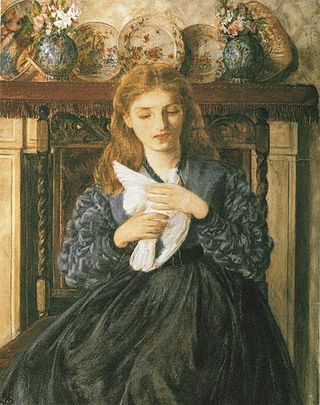
Rebecca Solomon was a 19th-century English Pre-Raphaelite draftsman, illustrator, engraver, and painter of social injustices. She is the second of three children who all became artists, in a prominent Jewish family.

Rosa Frances Corder was a Victorian artist and artist's model. She was the lover of Charles Augustus Howell, who is alleged to have persuaded her to create forgeries of drawings by Dante Gabriel Rossetti.
Harriet Gouldsmith was an English landscape painter and etcher.
Mary Harrison was an English flower and fruit painter, and illustrator. She became popularly called the "Rose and Primrose painter". She has also been known as Mary P. Harrison and Mary Rossiter Harrison.
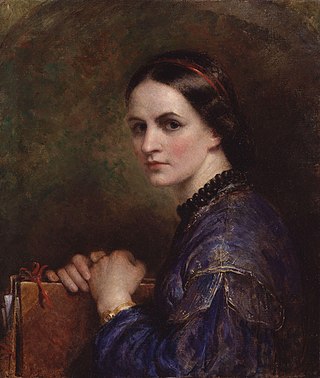
Ann Mary Newton was an English painter. She specialized in portraits of children and worked in crayon, chalk, pastel and watercolour. Newton studied in England under George Richmond and in Paris under Ary Scheffer. Her works were exhibited at the Royal Academy of Art between 1852 and 1865.

Joanna Mary Boyce was a British painter associated with the Pre-Raphaelite Brotherhood. She is also known by her married name as Mrs. H.T. Wells, or as Joanna Mary Wells. She produced multiple works with historical themes, as well as portraits and sketches, and authored art criticism responding to her contemporaries. She was the sister of Pre-Raphaelite watercolourist George Price Boyce.

Isabelle de Steiger, née Lace, was an English painter, theosophist, occultist and writer. She became a member of several esoteric societies in London, and was a close friend and co-worker of Anna Kingsford.
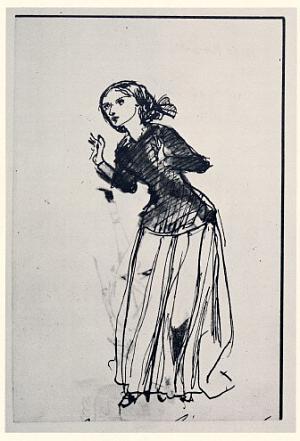
Anna Mary Howitt, Mrs Watts was an English Pre-Raphaelite painter, writer, feminist and spiritualist. Following a health crisis in 1856, she ceased exhibiting professionally and became a pioneering drawing medium. It is likely the term "automatic drawing" originated with her.
Ann Charlotte Bartholomew (1800–1862), was an English flower and miniature painter, and author.

Francesco Saverio Altamura was an Italian painter, known for Romantic style canvases depicting mainly historical events.
Lady Maria Bell was an English amateur painter and sculptor.
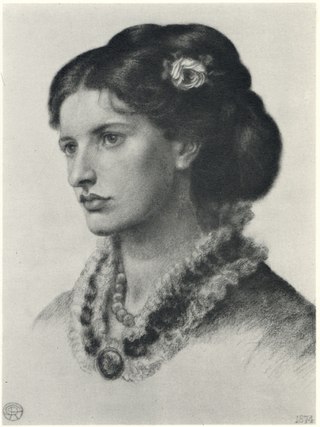
Lucy Madox Brown Rossetti was a British artist, author, and model associated with the Pre-Raphaelites. She was married to the writer and art critic William Michael Rossetti.

Margaret Gillies was a London-born Scottish miniaturist and watercolourist.

Rosa Brett, was a Pre-Raphaelite painter and sister of landscape artist John Brett. Their mother was Ann Brett and their father was an army surgeon, Captain Charles Curtis Brett (1789–1865). Rosa grew up in Dublin, but was known to travel on the continent, spending 1854–55 in Belgium for her health.

Martha Darley Mutrie was a British painter. Her paintings consisted mostly of fruit and flowers. She grew up in Manchester, England, and studied at the Manchester School of Design. Mutrie's works were shown at the Royal Academy of Arts, Royal Manchester Institution and other national and international exhibitions. Her works are among the collections of the Victoria and Albert Museum and the Russell-Cotes Art Gallery & Museum.
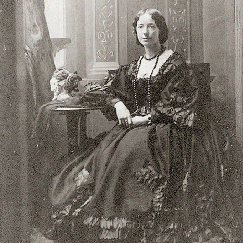
Annie Feray Mutrie was a British still-life painter. She exhibited regularly and she and her sister Martha were considered the best flower painters in oils.
















